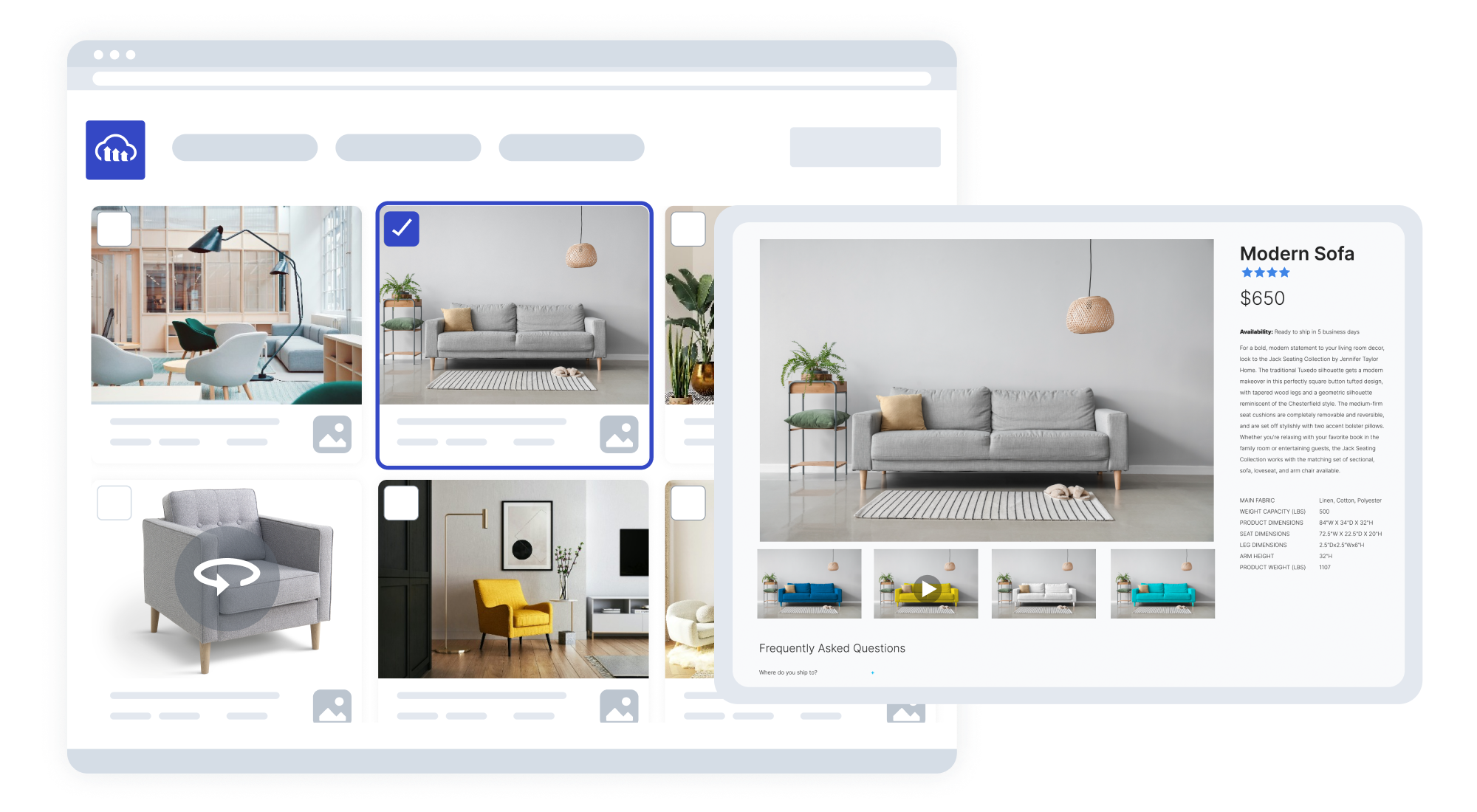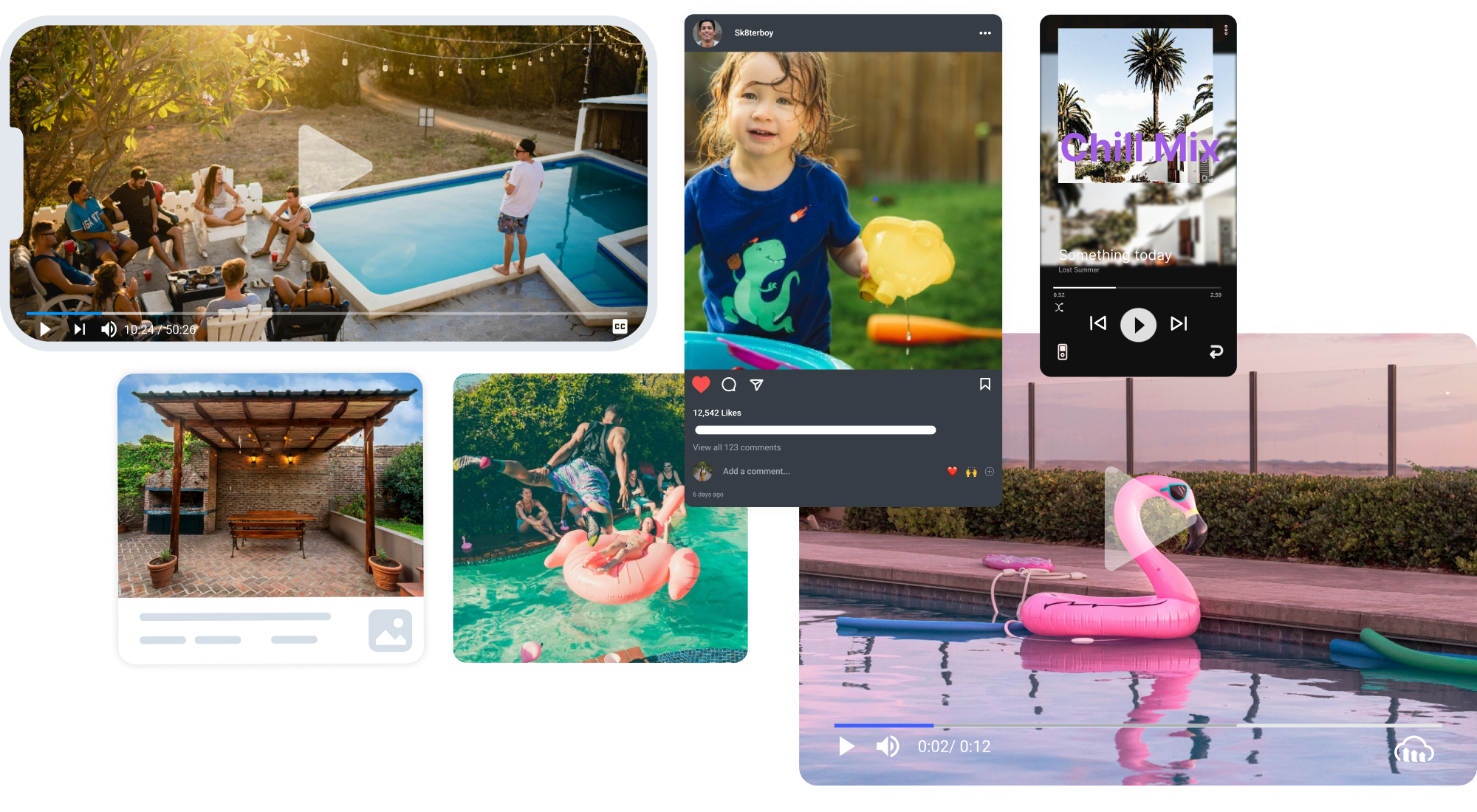If you’re a content marketer, creative, designer, one of the more jarring AI-related remarks recently uttered came from OpenAI CEO Sam Altman.
To wit,
“95% of what marketers use agencies, strategists, and creative professionals for today will easily, nearly instantly, and at almost no cost be handled by AI.”
Gulp.
The certitude of this statement has, at the very least, sent a collective shiver down the backbone of those in the creative space and has led many of us to believe that anyone with decent prompt-writing skills is going to replace entire content teams, shutter agencies, and single-handedly leach the life out of the creative process.
Before this spirals into an all-is-lost screed, let’s take a breath and admit that the accounts of the demise of the content marketer, the creative, and the designer, have been greatly exaggerated.
For those in the business of creating, managing, delivering content, now is not the time to panic. Rather, it’s time to stop worrying and learn to love the changes that AI and GenAI “promise” and seek out areas where these developments can be used as pluses versus the career-ending minuses many have been inculcated into thinking are coming. (One pretty big caveat: the future will be what the future has always been: uncertain, inescapable, and not what you expect.)
Admittedly this call to embrace the coming AI-powered changes is about as obvious as any productivity hack you’ll find on LinkedIn, but let’s attempt to find a few ways AI will impact your day to day and on a more philosophical level, all of content marketing, along with the ways AI will change workflows, digital asset management (DAM), then decide if we have anything to be afraid of.
Of late there has been a fair bit of news from members of the anti-AI movement. Notably, AI was a sticking point in the Writers’ Guild of America strike in 2023. In other industries, anti-AI sentiment has been expressed in the form of StackOverflow banning ChatGPT or any LLM when posting content. The Getty Images has banned AI-generated content due to legal challenges, to name a few.
Not surprisingly, a number of brands are eschewing AI-generated content for purely human-generated content as a brand differentiator with some going so far as tag posts #noai, #notai, and #noaiart.
Among content marketers, resistance to AI has been, somewhat ironically, data-driven. Yes, AI can generate dozens of pages of content within minutes which should boost website traffic. Unfortunately, the lift you get from AI content is superficial. Studies of sites filled with only AI-generated content saw their organic traffic decrease by 95% after Google’s core update in March.

Here’s the prediction. What’s going to happen is content marketers and AI tools are going to meld to spawn a human/AI hybrid approach to content creation and management. More directly, AI and GenAI will augment human creativity, not replace it. Sure, the lazy content marketers among us will generate the largest share of the content, but valued and valuable human-generated content and highly creative and/or highly repetitive AI-generated content will set the standard, perform best, and generate real revenue.
As this human/AI hybrid model relates to workflow, content creation and management, and digital asset management, there will be far more assets and versions to manage. The exponential increase in the volume of assets created, in new formats, and who knows how they’ll be sized, will pull collaborative work management and DAM capabilities in never-before-seen directions. Organization, discoverability, and storage are just three challenges the AI-era tools, especially DAM systems will have to conform to.
This is the dawn of a new DAM era in which the DAM must rapidly adapt to accommodate and bring order to yet-to-be discovered asset types, and in which brand survival will be as much about quality human/AI-created content as it is about working within future-proof, API-first digital asset management systems that are highly compatible with a composable strategy when developing a techstack/ecosystem.
While it’s still early days, it’s clear that privacy laws and ethical standards are lagging when it comes to AI-powered data collection. Governments and regulatory agencies are scrambling to write, implement, and somehow enforce, new data collection laws and privacy rules. AI will analyze never-before-possible amounts of data to reveal not just demographic or audience preferences, behaviors, and trends, but those of the individual. (GPT is already capable of generating text contextually relevant and tailored to specific audiences). This highly specific data will inform content strategies and the subsequent content creation and delivery. Managing so many new assets will be, as mentioned, handled by AI, delivery of these assets to the intended target will be an added layer of complexity the content marketer, along with AI, will have to address.
A good DAM system will assist with compliance and be set to ensure that content meets established standards. A better DAM will provide unalterable audit trails and version histories for transparency and accountability.

DAM systems will need to integrate with AI analytics platforms to provide a holistic view of specific audience members, their likes, dislikes, etc., while tracking content performance. It will be imperative that all marketers make informed decisions, or at the very least, are equipped with stringent standards regarding the appropriate and/or legal, reasonable level of personalization, along with which assets to use and how to optimize them. The DAM could, in effect, become a standards and moderation tool along with a repository of the assets a single person has consumed during their relationship with a particular brand or service.
Moving from the micro to the slightly more macro, these individualized creative campaigns will also be AI-managed. By that I mean the campaign creation process, from briefing the creative team, through revisions, stakeholder reviews and approvals, to the integration of the creative elements into the necessary distribution to an ever-expanding network of channels and platforms, will be AI-powered and managed.
While campaigns are active, any number of events can take place that could alter the creative like a change in strategy, a sudden opportunity brought on by an unexpected piece of news, anything really. Stopping a campaign to fix the creative is never good and restarting is always expensive.
AI can edit in-flight campaigns. No need to pull the creative. Fix errors. Identify underperforming content Recalibrate your audience based on your updates immediately. This broad GenAI use case hardly sounds like something a content marketer should be afraid of.

The creation of audio content, podcasts, short- and long-form videos, animations, even interactive content within videos like quizzes, polls, clickable overlays, user-defined-next-actions, will proliferate. Generative AI models will be trained on a wide variety of data. Currently, text and image models rule the roost but video and AR/VR models will soon become more prevalent. Multimodal generative systems incorporating many types of training data will allow for the creation of a variety of asset types from a single request, thereby providing content marketers with a bottomless well of material to share with their audiences or a specific prospect at a specific stage in the funnel.
From the technical standpoint, DAM systems will have to be more than a centralized hub for all these evolving types of content. Fast findability, retrieval, and repurposing through metadata creation, custom taxonomies will be a must. (On this front, check out Cloudinary AI Vision – presently in beta.) AI-expanded searches that include face recognition, object detection, etc., will further help marketers quickly find and better manage digital assets.
Additionally, DAM systems will facilitate the real-time updating of content by integrating with AI analytics tools. They will manage version control and ensure that the latest content is always available for distribution.
At pretty much every content marketer’s watering hole the vibe is one of nervousness with a side of abject horror and a dash of bitterness. Not to put too fine a point on it, but it’s as if the creative class has come to the same conclusion: the entire objective of all artificial intelligence research has been nothing more than a wildly complex plot to make content creators obsolete.
Obviously, the demise of the creative has never been the goal. No one, I’m confident, is clever enough to find a way to be rid of the clever marketer. Rather, the whole object of the exercise has been to find a better way to be a better marketer and an even better creative.
Take email marketing as an example. In its infancy there was a demand for HTML coders, copywriters, graphic designers, and programmers. At the time, the addition of these roles was considered a watershed moment in the history of marketing. Then, along came automation platforms making the work of delivering highly complex, targeted email campaigns more streamlined. I don’t recall there being a whole lot of hand-wringing when the HTML programmer or marketing data specialists suddenly had to pivot. Many of these talented individuals moved to more strategic roles.
The key point here is AI, GenAI, machine learning, whatever flavor you’re terrified of, is coming. Not for your job, but it is coming. A better discussion might be how to make creative jobs better. After all, isn’t that the object of the exercise, how can we make our jobs and work better?
To learn more about Cloudinary AI and how it can improve your marketing team operations, contact us today.



